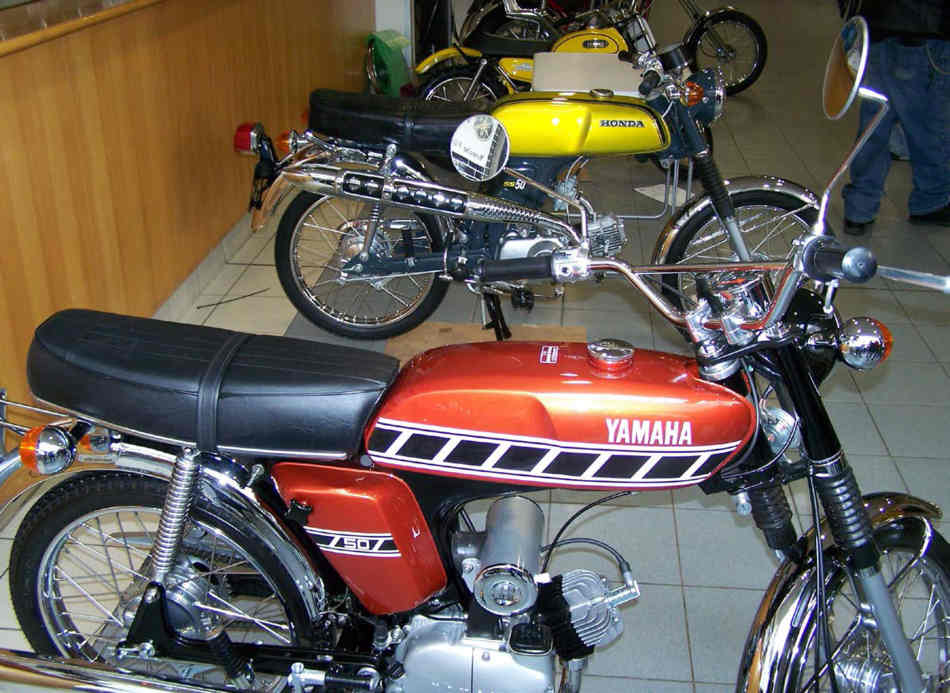
There was a time, many years ago, when some of the contributors to this august journal had long hair, pimply faces and flares, when there existed a sub culture of the much loved ‘powered two wheeler’.
It was called a ‘moped’ – and was generally know as a wheezy overgrown bicycle with a puny little single speed 49cc stink wheel engine and a pair of all but useless pedals.
Unfortunately the pedals were required by law and for some bizarre reason had to be able to propel the bike along without the
engine running.
Mopeds were economical and cheap to run, easy to ride and largely reliable. What they were not, was cool.
It was just not the done thing to be seen on a machine that your mum might put a basket on the front of, only just capable of overtaking a milk float or a tractor when you weren’t wobbling slowly along in the gutter dodging drain covers, squashed hedgehogs and gravel, at the mercy of every other road user.
The word ‘moped’ was thought to have been derived in the early 1950s by a Swedish journalist from the words ‘motor’ and ‘pedal’.
Others however believed that the term was an abbreviation of the French word ‘motorvelociped’ which actually took more kilowatts of energy to say than most mopeds produced, which was in itself probably a good reason to shorten it.
Mopeds were not of course the first machines to combine engines and pedals. Many early motorcycles relied on cyclic lower limb power to coax the engines into life, pedalling frantically along being easier than running and bump starting, but as bikes became more complex and technical the pedals were rightly dispensed with, and for a while pedals and motorbikes became mutually exclusive.
It wasn’t until after the Second World War that the pedals were reunited with the infernal combustion engine, when the nation that brought us the 2CV saw fit to stick a small engine on the front wheel of a Heath Robinson contraption known as a ‘Cyclemotor’.
The Cyclemotor did exactly what it said on the tin. It was basically a slightly beefed up bicycle with a two-stroke motor where the wicker basket and pain (pronounced ‘pan’) should be. The engine drove a small reverse roller, which in turn pressed on the tyre, providing traction. When the tyre was pumped up and dry that is.
Fellow countrymen Motobecane took a more conventional approach with their ‘Mobylette’ and fitted a set of pedals connected a conventional chain and sprockets affair on the right side of the bike, and a clever centrifugal drum clutch, rather like a brake drum in reverse driving a second chain and sprockets in the left. The engine by now was underneath, with exhaust gases escaping through something that looked like a short garlic sausage with a tiny pipe sticking out of it.
While the Mobylette by comparison was rather plush and well made, it was still a million miles from being cool, unless you were 15, your name was Jean-Pierre, you wore espadrilles and shorts, smoked Gaulouses and rode your bike on the Paris pavements.
Back in Blighty the moped was still nothing more or less than a cheap form of transport, seemingly favoured by older people who rode to work in shops and factories, and despite the valiant efforts of giants like the Mobylette and the Puch Maxi to add style to their products, mopeds were still a million miles away from being cool.
Piss pot Everoak helmets, PVC great coats and gauntlets completed the picture, any self respecting teenager didn’t want to be associated with this kind of fashion suicide, loon pants, tie-dye ‘granddad’ shirts and long greasy hair notwithstanding. But that was OK, because sixteen year olds were allowed to ride proper motorbikes up to 250cc, their flowing locks blowing in the breeze
Unfortunately in 1971 Tory Transport Minister John Peyton introduced a law banning sixteen year olds from riding motorbikes, condemning Britain’s misunderstood youth to be restricted to machines of not more than 49cc, and fitted with pedals. It was SO unfair.
And then in 1973 the wearing of crash helmets was made compulsory, a move that was one of those ‘Marmite’ moments popularity wise, further compounded by an exemption for turban wearing Sikhs. Some dyed in the wool Brits even converted to Sikhism to avoid wearing a lid. They still had to wear a turban full time though.
Life for a 16 year old in the early 1970s was one big contradiction. You were old enough to legally smoke, get married, work for a living, pay tax, join the armed forces and even have sex (fat chance!) – although only with someone of the opposite sex.
But you were not considered mature or responsible enough to drink a pint, to drive or to ride anything bigger or more powerful than a moped on the road. Unless it was a road roller (we all examined the small print on our licences for potential loopholes didn’t we?).
Fortunately for the lucky few whose parents were wealthy or generous enough to indulge them, on the other side of the world those fiendishly clever engineers at the Yamaha Motor Company in Iwata had spotted a loophole, and were looking at ways in which they could adapt their successful 1960s F5 light motorcycle to fit in with the vagaries of the British moped laws.
The F5 was built around a T shaped pressed steel frame, and powered by an ‘Autolube’ self mixing disc valve two stroke engine. The F5 later evolved into a model know as the FS1, which featured a high-rise exhaust, rigid footrests and five gears.
The engineers at Iwata detuned the bike and fitted a four speed box, with Dutch engineer Henk Dullens designing a set of working pedals where a cotter pin could be released, allowing one of the cranks to swing through 180 degrees and lock into place to act as a pair of footrests.
While there is some conjecture about who produced the first sport moped, or ‘Sixteener Special’ as they became known, the Yamaha was certainly the most popular and successful, at least from where I was standing, jealously eyeing up this sleek and stylish golden beast.
In keeping with this new trend, this new version of the FS1 was initially known as the ‘SS’ but for perhaps obvious reasons this was soon dropped in favour of the name FS1–E (for England, although there wasn’t an FS1-S for Scotland as far as I’m aware)
To read more about my encounters with the Fizzies and their riders, check out ‘Teenage Kicks’ in TRD 164, I never owned one, but I have always had a sneaking admiration for them.
FS1-Es were a teenage dream, they looked like a proper motorbike, with a petrol tank where it should be (lesser mopeds were known as ‘step-throughs’) and they had four gears, indicators and even a brake light!
I realise at this point for our younger readers this must read like someone from a history book extolling the virtues of electric lights or flushing toilets, but believe me, back in the day this was a big thing.
Other sports mopeds were available of course. My mate Jonathan had a yellow Puch VZ50, which also had a tank in the right place, a sporty looking dual seat and a twisty scooter style clutch assembly with a 3-speed gear change. It ‘almost’ looked the part, but not quite.
Puch obviously agreed with me, as they then released the fantastic looking M50GP, a version of which was available in the style of distinctive black and gold ‘John Player Special’ F1 cars, but was actually called a ‘GPS’ – I’m not really sure how they got away with such a blatant rip off, if indeed they did.
Honda tried in vain to muscle in on the success of the FS1-E with the SS50, a gutless and awkward looking bike that had all the right things in the right places, but somehow never quite pulled it off.
The kickstart was awkward and tended to fold up half way through its stroke. I remember my mate Trev constantly bashing his ankle and swearing profusely, later getting an early version of ‘repetitive strain injury’ through constantly holding the throttle wide open, with his right elbow resting on his thigh as he tried to wring every last drop of power from the modified C50 engine.
The centre stand was made of plasticine and would usually cause the parked bike to wobble alarmingly from side to side, which is why he used to lean his against a wall. It was the kind of bike that a parent would choose for you when you’d asked for an FS1-E.
The Europeans meanwhile were not slow in catching up with this developing craze, introducing some imaginative takes on the theme, including the ultra successful Garelli Tiger Cross, which cleverly featured both pedals and low slung footrests.
The Fantic Chopper appealed to the more flamboyant amongst us, mimicking the layout of Peter Fonda’s ‘Captain America’ Harley chopper from the cult movie ‘Easy Rider’. Except with a two-stroke 49cc engine and pedals.
Suzuki were comparative latecomers to the scene, but made a big impact when they launched the AP50 in 1976. This bike was noticeably faster than the FS1-E, and while arguably not as tidy looking, the Suzuki was the obvious choice if you wanted to be the quickest.
Yamaha responded by introducing the FS1-E DX, which had a few modifications like a hydraulic disc brake, and a rather lovely bright yellow paint job.
Then they updated the designs by adding new colours (brown, anyone?) and introducing the Kenny Roberts inspired ‘speedblock’ design, which gave the model a new lease of life.
But the sword of Damocles was about to fall on the booming sports moped market.
Realising that mopeds were getting faster and therefore more dangerous, the government had to find a way to spoil the fun of sixteen year olds all over again, and in 1977 introduced a new set of regulations limiting all new mopeds to a maximum speed of just 30mph, and bizarrely the requirement to weigh less than 250kg.
That’s a quarter of a tonne by the way. My BMW R1100S tips the scales at 229kg with a full tank. What were they thinking?
The ‘Sixteener Special’ boom was over as quickly as it had started, sales plummeted while the value of used FS1-Es and AP50s soared.
On the plus side, ‘slo-peds’ as they were by now known were no longer required to be fitted with the ridiculous faux-pedals arrangement and could have proper footrests.
Worried parents probably felt more secure knowing that their stack heel wearing offspring were only doing 30 mph, but once again riders were at the mercy of and causing annoyance to pretty well every other road user, creating mobile chicanes almost everywhere.
How those ‘in the know’ ever thought this was a good idea I’ll never understand. The law still stands today, like a Victorian father I banned my son from having a moped when he was 16, but allowed him to have a Honda XR125L a
year later.
Talk of de-restriction kits and mods was rife in the late 70s (and still is) and while releasing those 4.8 pent up horses was and is undoubtedly more fun, it didn’t take a genius to work out that anything newer than an ‘R’ plate bike doing more than the allowed speed was and is illegal, with nullified insurance cover likely to give young licences and insurance premiums a battering they would take years to recover from.
Alas with so many wonderful aspects of the 1970s, like the ‘Steve Hackett’ Genesis period, like space hoppers, like Jenny Hanley on Magpie, Raleigh Choppers, and even for some The Sex Pistols, things were great, and then suddenly they were gone, seemingly forever.
But in these modern times, when the temptation to wallow in nostalgia gets too much, there are things you can do to relive that halcyon era.
Steve Hackett is currently touring with all his own hair and once again playing 1970s Genesis songs. You can watch the lovely Jenny on Youtube, and you can once again buy space hoppers and even Raleigh Choppers. On the downside, Johnny Rotten advertises butter on the telly. You can’t win ‘em all.
You can even still buy an FS1-E if you try hard enough, they’re out there. If you scour the weeklies and EBay you can pick one up as a basket case for a few hundred quid, or pay the price of a small car for a perfectly restored minter.
The vintage Japanese motorcycle scene has really picked up over the last few years, with bikes that once seemed to feature built in self destruction (remember how the paint used to flake off the swing arm after only a few weeks?) popping up as immaculate cherished machines.
A recent visit to a Bike Jumble at Ashford Market in Kent revealed not one, but four pristine Fizzies standing in a row under a banner for a sixteener special web forum, all with what you might call ‘delivery mileage’ on them. Two of the FS1-Es on show belong to Tony Collins, who runs the website – and he had previously owned the other two.
Tony admitted that ‘a lot of hours’ had gone into each of the restorations, returning the bikes to better than new condition, each one of them meticulously stripped down to the last nut and bolt and rebuilt.
The attention to detail was stunning. All of the bikes run but Tony admitted that most of the tiny numbers of miles on the clocks were from being wheeled in and out of shows.
The display wasn’t limited to FS1-Es, there was a tiny Yamaha dirt bike, a Honda SS50, a Fantic Chopper and an ultra rare Gitane Testi Super Champion (I have to admit that was a new one on me). All of the bikes were in absolutely perfect condition.
Tony said that he hadn’t had too much trouble locating parts for most of the bikes, but when the rarer items, like the Fantic’s front mudguard for example appear on Ebay, the price soon rockets, with bidders from all over Europe trying to get their hands on them.
An ironic twist is that Yamaha now ask Tony to take the bikes along to show and represent them, I get the feeling he is something of an authority on them.
Away from this immaculate collection of ‘sixteener specials’ I wandered into the main exhibition hall, where visitors’ senses were treated to the smells and sights of dozens of bikes dating back over the previous century, with gents of a certain age reminiscing about bikes they’d known from their teens.
In among them all was another immaculate yellow FS1-E DX. A bike from my youth.
You have to admire Tony Collins and his peers for keeping these historic machines alive, for the hours they’ve spent polishing spokes, rubbing down paintwork or tracking down spares.
I can’t say I’d want one now though, I’d want a lot more bike for my effort. It was a very different story forty years ago of course, when I’d have given anything to own one.
Thanks to Tony Collins and www.yamaha-fs1e.co.uk
Martin Haskell
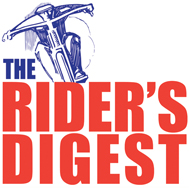
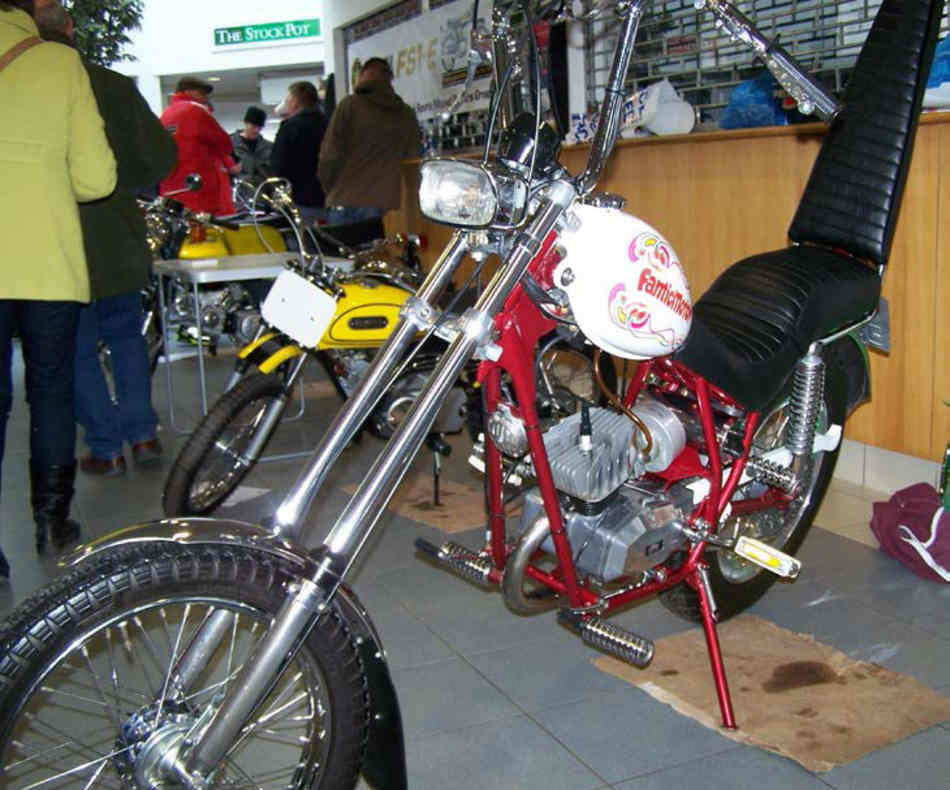
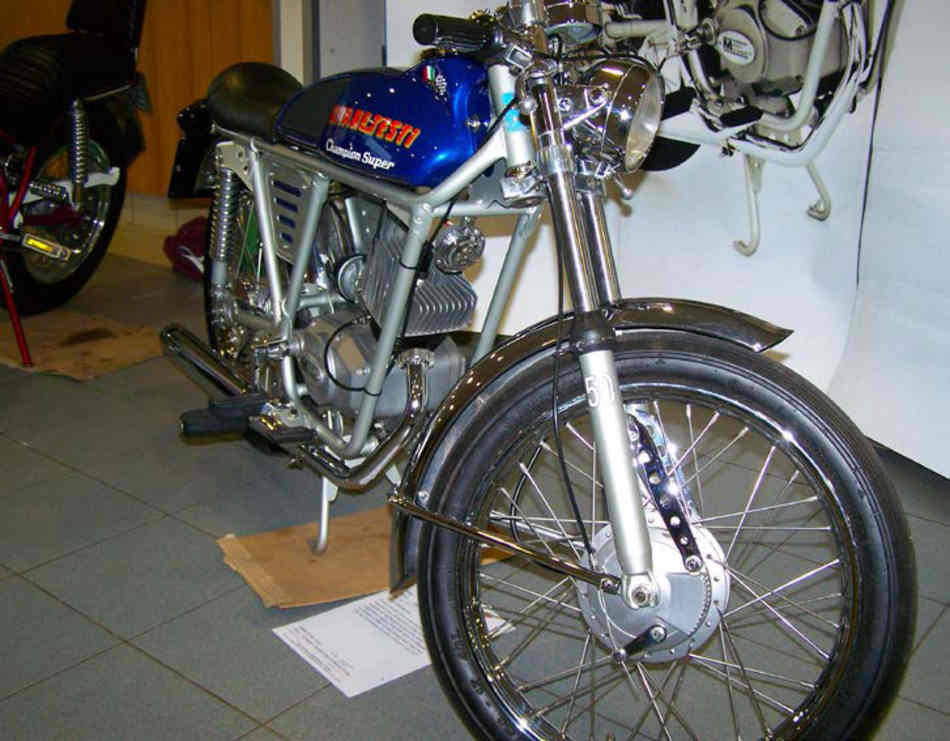
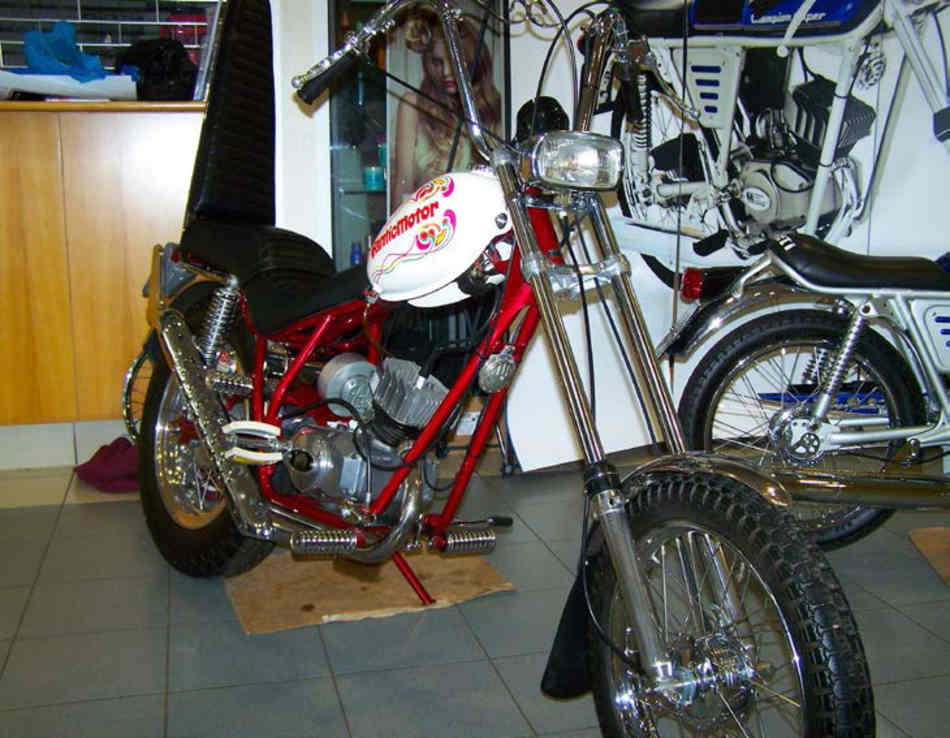
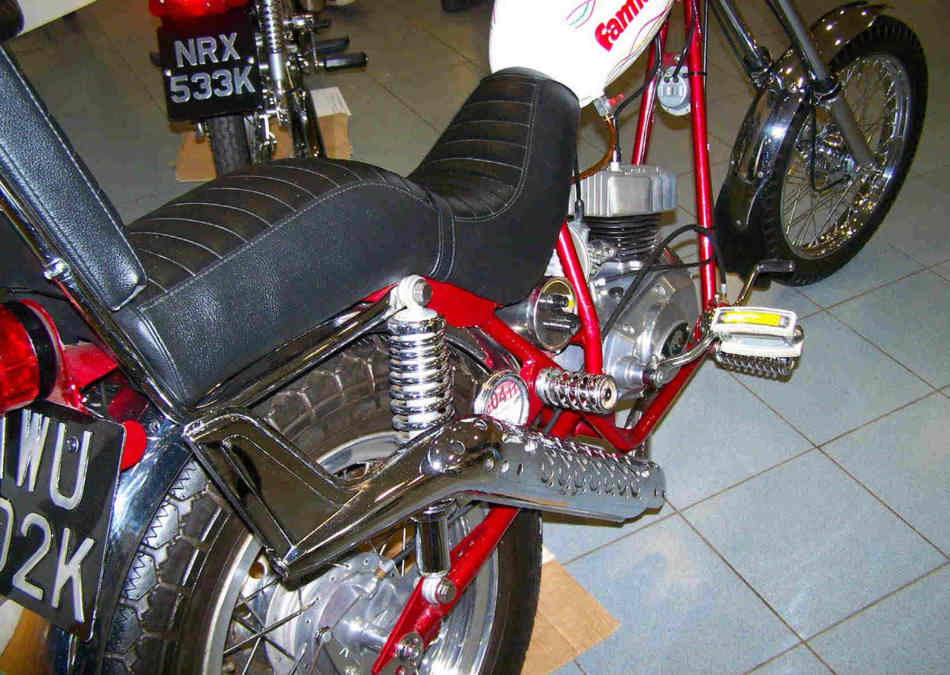
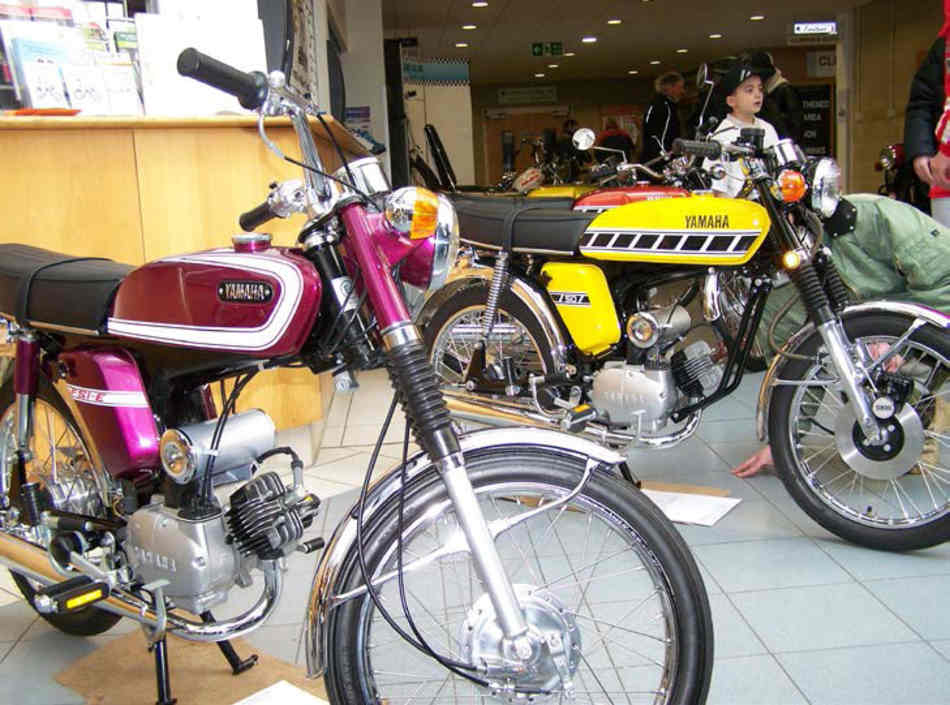
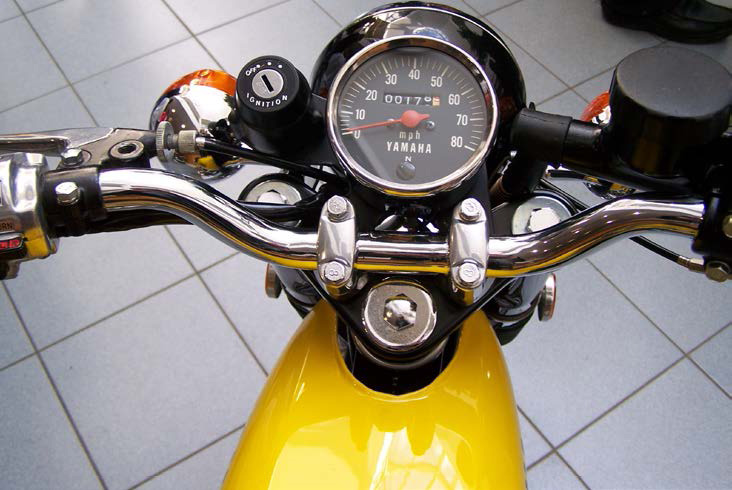
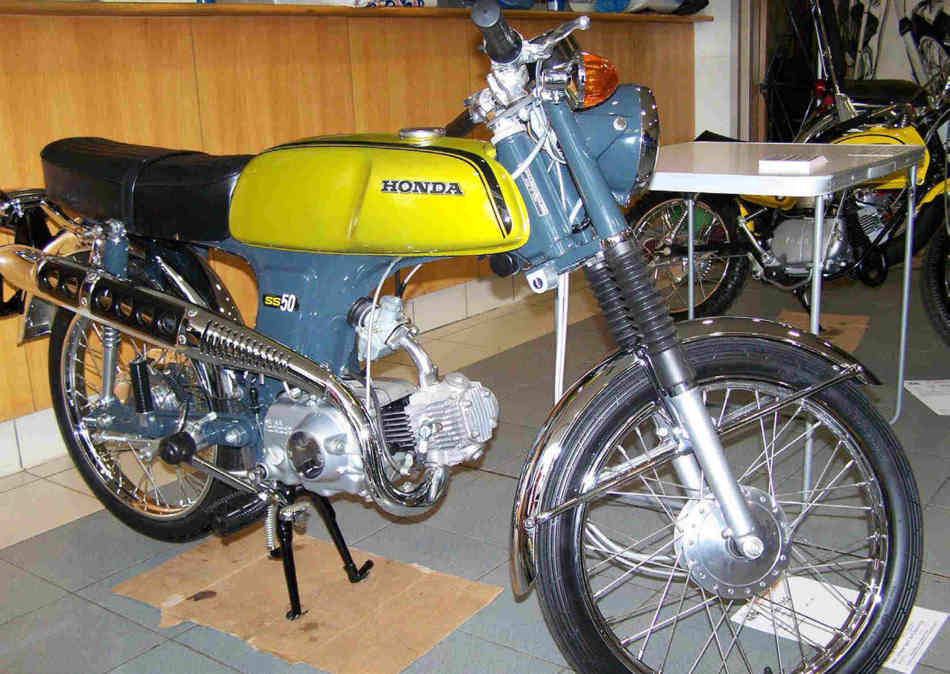

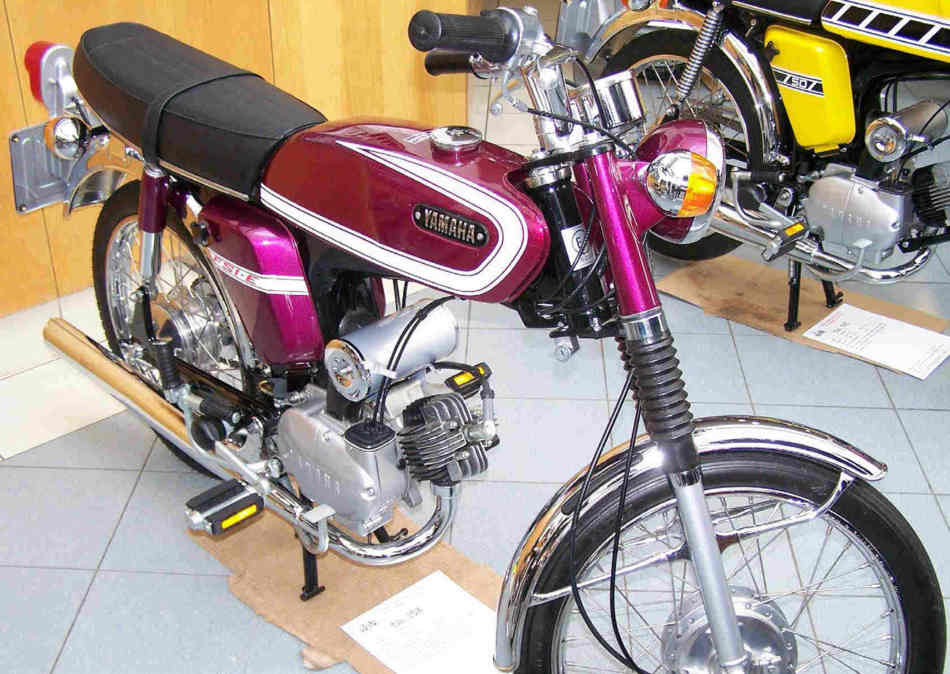
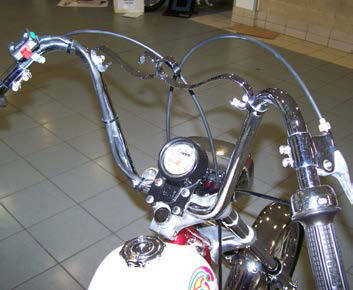
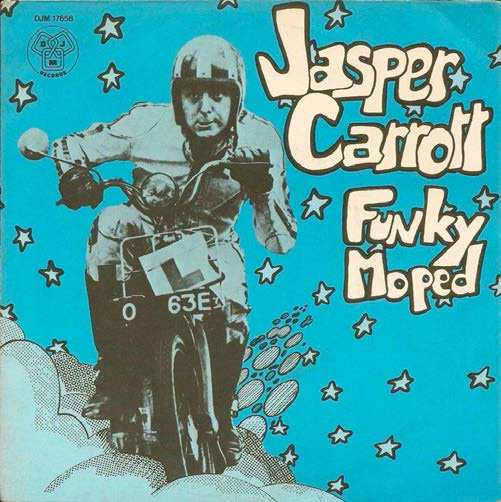
I still have my Fizzy on the road,but it just aint fast enough for me in traffic,that is why I have kept my BDK tuned AR50. I really like the Japanese engineering from the 1980s..
Anyone tired of their slow TY50 or RD50, I have a good TY/RD 80 engine c/w carb and exhaust for sale leftover from project.